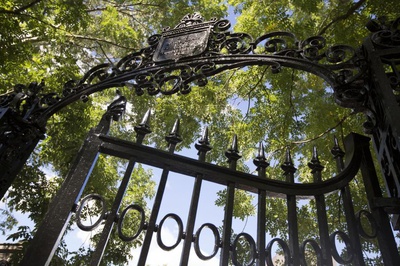
News
Harvard Grad Union Agrees To Bargain Without Ground Rules

News
Harvard Chabad Petitions to Change City Zoning Laws

News
Kestenbaum Files Opposition to Harvard’s Request for Documents

News
Harvard Agrees to a 1-Year $6 Million PILOT Agreement With the City of Cambridge

News
HUA Election Will Feature No Referenda or Survey Questions
SUBMARINE PICTURES TO BE SHOWN TONIGHT
SPEAKER HAS INVENTED DIVING BELL FOR WORK
Submarine photographs, taken by J. E. Williamson, the originator of undersea motion pictures, will be shown in connection with his lecture on "Beauty and Tragedy Under the Sea" which he will give at the Harvard Union tonight at 8 o'clock. The pictures represent the ocean-floor around the Bahama Islands.
While working for a newspaper several years ago, Mr. Williamson conceived the idea of taking undersea pictures from a water-tight, steel tube with a window in its bottom, suspended from an object on the surface. The plan worked successfully, and he soon organized a company of submarine photographers, and set out for the West Indies.
Since then he has improved the observation tube. It is flexable, having joints like the bellows of an accordion, and provides comfortable seating-room for six people at a time in the chamber at its lower end, from which they may observe the phenomena of the ocean-floor through a pane six feet in diameter. The tube, which may be raised or lowered at will, is suspended from the side of the mother ship.
Mr. Williamson has recently been studying the habits of fishes, and collecting specimens of coral in cooperation with the American Museum of Natural History and the Field Museum of Chicago. Some of these specimens weigh from three to four tons, and require careful work with dynamite and cables for their successful salvage.
Want to keep up with breaking news? Subscribe to our email newsletter.
From Our Advertisers

Over 300+ courses at prestigious colleges and universities in the US and UK are at your disposal.

With innovative financial tools combined with financial education, Collegiate empowers students to take control of their finances and build confidence in their money management skills.

Serve as a proctor for Harvard Summer School (HSS) students, either in the Secondary School Program (SSP), General Program (GP), or Pre-College Program.

With an increasingly competitive Law School admissions process, it's important to understand what makes an applicant stand out.

Welcome to your one-stop gifting destination for men and women—it's like your neighborhood holiday shop, but way cooler.

HUSL seeks to create and empower a community of students who are seeking pathways into the Sports Business Industry.
